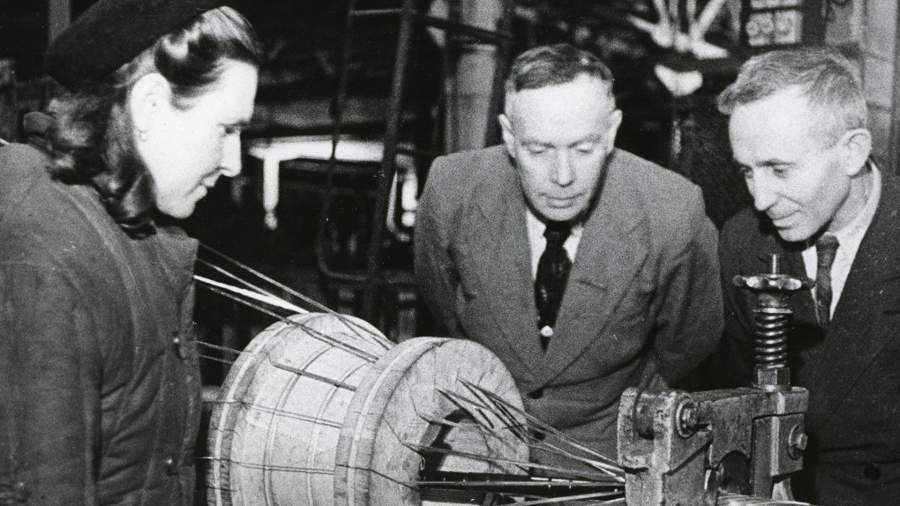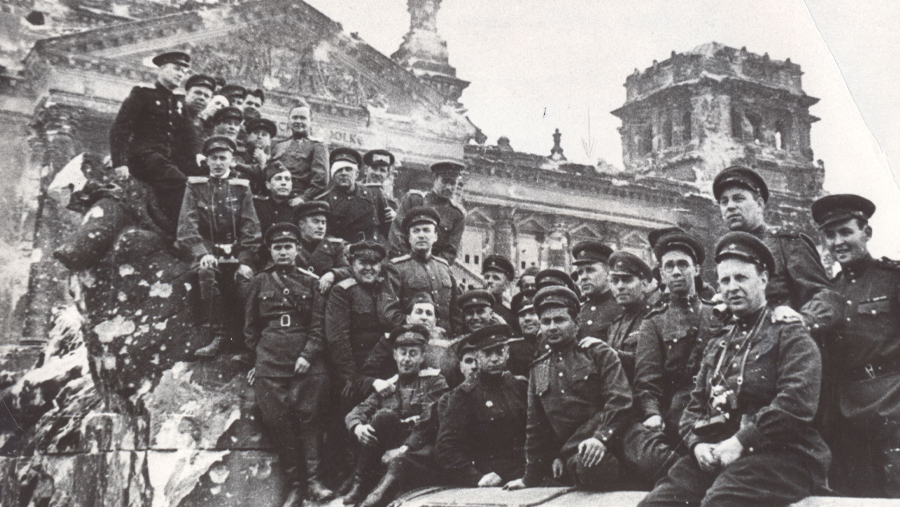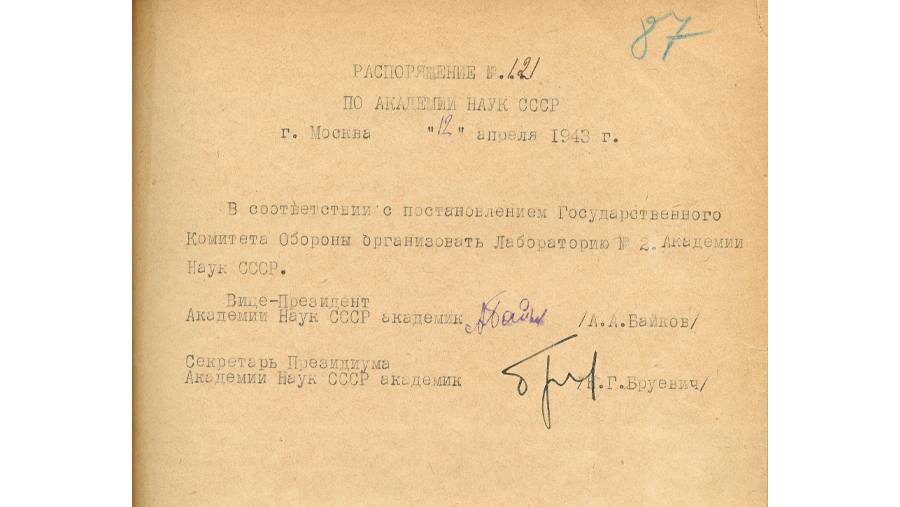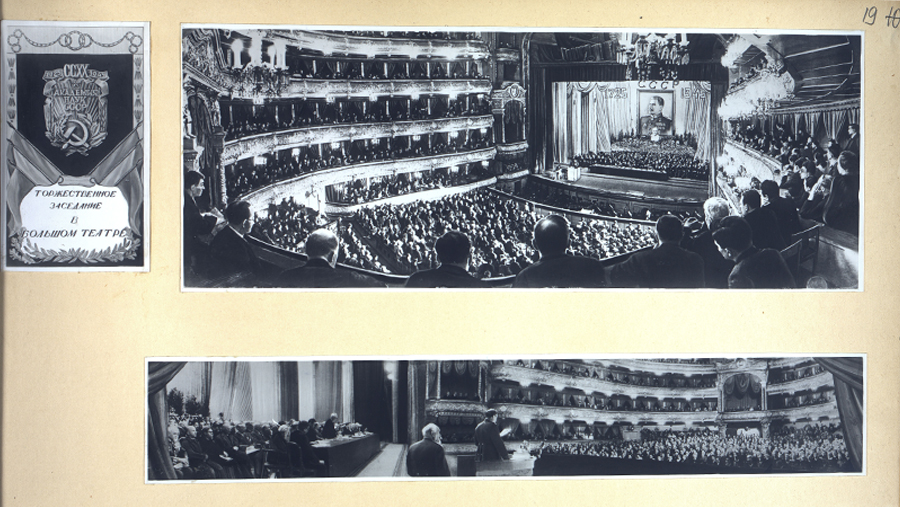Science to the Front: what contribution did academic institutions make to the Victory
- Статьи
- Science and technology
- Science to the Front: what contribution did academic institutions make to the Victory

During the Great Patriotic War, scientists took an active part in the fight against the enemy. The Academy of Sciences, one of the largest organizational centers in the country, has mobilized research teams to create new materials, weapons, medicines, fuel, and products that have made it possible to technically surpass the enemy and win. The war has shown that science is not only a way of understanding the world, but also a weapon that can crush the enemy.
The Academy of Sciences in the first days after the invasion
During the war, scientists took an active part in the fight against the enemy. From the very first days, the USSR Academy of Sciences organized research teams to help the front. Olga Selivanova, Deputy Director of the Archive of the Russian Academy of Sciences, told Izvestia about this.
— For example, the very next day after the invasion, an expanded meeting of the Presidium of the USSR Academy of Sciences was held, where scientists decided to devote all their efforts to defense tasks. In July 1941, the post of Commissioner for Science was created under the State Defense Committee (GKO). Sergey Kaftanov was appointed to it," the specialist said.

According to her, in July, the relocation of scientific institutes to the rear began. The evacuation commissioner was Otto Schmidt. Despite the difficulties, the scientists immediately launched a tremendous scientific activity. Commissions and committees have been set up for operational communication between scientists, military personnel and industry representatives.
For example, in August 1941, a Commission was established in Sverdlovsk to mobilize the resources of the Urals, Western Siberia, and Kazakhstan for the defense of the USSR Academy of Sciences. It was headed by Academician Vladimir Komarov. Experts from 60 scientific research institutions participated in the work. They organized the transfer of the metallurgical complex of the Urals and Kuzbass to military rails.
— Scientists worked at enterprises. Together with engineers, they developed new technologies and methods of metalworking. In particular, Andrei Bochvar's group created zinc silumin in 1942, a new lightweight and efficient alloy for the production of tank and aircraft engines. As a result, high—speed methods of melting armored steel, high-quality casting and other innovations were introduced into production, which helped to multiply the production of artillery, tanks, aircraft and other military equipment," explained Olga Selivanova.

Also, according to her, in June 1942, in Kazan, under the leadership of Academician Evgeny Chudakov, the Commission for the Mobilization of Resources of the Middle Volga region and the Kama region for the needs of the country's defense under the Academy of Sciences of the USSR began to operate. Among other things, her efforts led to the production of aircraft engines in Kazan, and Il—2 aircraft, one of the symbols of Victory, in Kuibyshev (now Samara). In addition, many deposits of oil, metals, chemical and construction raw materials were developed in record time.
Rearmament of aviation, navy and medicine
On April 3, 1942, the historian said, a Commission on scientific and technical naval issues was established under the chairmanship of Academician Abram Ioffe at the USSR Academy of Sciences. Igor Kurchatov became its academic secretary. One of the outstanding achievements of scientists in this area is the development of a method for mine protection of ships by demagnetization. It was proposed by physicist Anatoly Alexandrov. As a result of the development, the Russian navy had no losses from magnetic mines during the war.
— Kurchatov arrived in Kazan in January 1942. Among other things, a new, more efficient tank armor was created in his laboratory, and principles for the rational placement of fuel tanks on combat aircraft manufactured in Kazan were developed," Olga Selivanova clarified.
Further, according to her, on June 17, 1942, the Military Sanitary Commission of the USSR Academy of Sciences was organized, headed by academician Leon Orbeli. Scientists have been creating new ways of medical care both at the front and in rear hospitals. Special attention was paid to the neutralization and healing of wounds, vaccines and medicines to fight infections. For example, the efforts of the team of Academician Nikolai Burdenko have introduced many new surgical methods that have saved thousands of lives.
At the same time, in August 1942, the Red Army Geological and Geographical Services Commission was established in Moscow on the basis of the Defense Works Section of the Bureau of the Geological and Geographical Sciences Department of the Academy of Sciences. Under the leadership of Academician Alexander Fersman, scientists made maps, studied territories for the construction of military infrastructure, searched for minerals and provided the army with information about natural resources that could affect the conduct of combat operations.
Fundamental science during the war years
Further, as the archive employee said, the Aviation Commission of the USSR Academy of Sciences was organized on March 15, 1943. It was led by academician Nikolai Bruevich. Scientists investigated the effectiveness of onboard weapons and developed new communication and navigation devices. In particular, Academician Sergey Khristianovich solved a number of important problems of aircraft durability. And the theory of flutter (spontaneous wing vibrations) Mstislav Keldysh (the future president of the USSR Academy of Sciences) helped to achieve high accident-free flights. As a result, scientists helped Soviet aviators gain air supremacy.
According to Olga Selivanova, fundamental research during the war also became one of the keys to Victory. For example, mathematician Andrey Kolmogorov defined the most advantageous dispersion of artillery shells. This helped to improve the accuracy of the guns. Including Katyush-type multiple rocket launchers.
At the same time, the specialist added, the Lebedev Physical Institute, located in Kazan, has become a source of new instruments and materials. Among other things, physicists have developed luminous compounds for aviation instruments and infrared binoculars. In addition, the Fianovs were engaged in the creation of radar systems that detected enemy aircraft at a great distance. Already in 1942, this equipment began to enter service with the Red Army and played an important role in protecting cities from raids.

— The chemists were not left out either. For example, academician Nikolai Zelinsky and his students proposed a method for producing toluene, an effective substance for explosives. And one of the famous weapons of the partisans, phosphorus—based mastic, was developed by chemist Anatoly Kachugin. Externally, the product looked like household soap. The partisans attached it to the wagons, and when the train picked up speed, phosphorus oxidized from friction with the air and caught fire, igniting the mastic. When burning, it heated up to a thousand degrees, and the wind carried the fire through the composition," the historian gave an example. Gorenje
She added that the humanities also contributed to the Victory. During the evacuation, scientists began work on the preparation of textbooks and literature of a patriotic nature. Fundamental works were also published. Russian Russian culture,"A Brief History of Russian Philosophy," and others are among them.
— It is noteworthy that during the war, the work of historian Evgeny Tarle "The Crimean War" was published, the first volume was published in 1941, and the second in 1943. The publication has become the largest study of the first world conflict on the planet. Also, the future academician Dmitry Likhachev, together with the archaeologist Maria Tikhanova, wrote the book "Defense of Ancient Russian Cities" in besieged Leningrad. It became so popular that it was read even in the trenches on the front line," Olga Selivanova said.
At the same time, she noted that on November 2, 1942, the Extraordinary State Commission for the Establishment and Investigation of the Atrocities of the Nazi Invaders (CHGK) began to operate. It included leading scientists. The information they collected helped to create an evidence base at the Nuremberg trials. In addition, based on their data, the USSR leadership formed demands for the countries of the Nazi bloc to compensate for the damage caused by the war and pay reparations.
According to the historian, the re-evacuation of the institutions of the Academy of Sciences took place during 1943. Then, starting in 1944, on the instructions of the government, scientists began to create a plan for the restoration and development of the national economy in the post-war period. This program was adopted on March 18, 1946 at the Supreme Soviet of the USSR in the form of a plan for the Fourth Five-year Plan. She determined the development of the country until 1950.
Переведено сервисом «Яндекс Переводчик»
